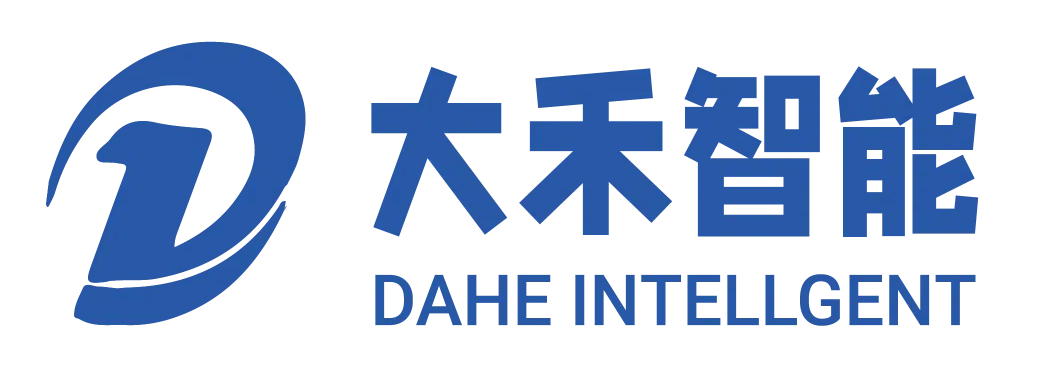When using HEPA filter production equipment, the key factors to ensure high quality are advanced automation and precise control systems, whether they can handle the complex process of bonding filter components, quickly cure and cool bonds, and whether they can customize corresponding fixtures to assist production when facing different models. These factors are key to creating strong and reliable filter production equipment. These factors are detailed below so you can use them more easily and conveniently for production.
PLC Control Used in HEPA Filter Production Equipment
The PLC system used in HEPA filter production equipment can continuously monitor variables such as temperature, pressure, adhesive viscosity, and product size. By dynamically adjusting these parameters in real-time, the PLC ensures that each HEPA filter is produced to precise specifications. This flexibility is beneficial when adjusting product sizes. As production needs change or new filter models are introduced, the PLC can be reprogrammed to accommodate these modifications without extensive rework. This level of automation improves production efficiency and reduces human error. In addition, the PLC system is responsible for coordinating the operation of two three-axis dispensing mechanisms.
The PLC controls these mechanisms to apply adhesive with extreme precision, ensuring even coating on both the top and bottom of the HEPA filter frame. The synchronization of these processes is critical, as any discrepancy in the adhesive application can result in a weak bond and, ultimately, a product failure. The PLC control system ensures that each dispensing unit operates in perfect harmony, protecting the structural integrity of the final product.
Dual three-axis dispensing mechanism for optimal adhesive application
The three-axis dispensing mechanism mentioned above applies the glue evenly to the upper and lower sides of the HEPA filter frame, ensuring even adhesive distribution. The dual dispensing mechanisms operate along three axes, meaning they can move in the X, Y, and Z directions with high precision. This multi-dimensional control enables the equipment to adjust the dispensing process in real-time to any changes in the geometry or positioning of the filter frame. In addition, using two independent dispensing units (one for the upper side of the frame and one for the lower side of the frame) provides additional redundancy and quality assurance. This dual approach ensures that if one dispensing unit encounters a minor problem, the other can compensate, reducing the risk of defects in the final product.
A central PLC control manages the synchronized operation of these dispensing systems, fine-tuning the process to maintain optimal performance throughout the production cycle. In addition to their role in adhesive application, these dispensing mechanisms also help improve the overall efficiency of the production process. With precise and automated glue application, the subsequent pressing and curing phases can proceed smoothly, thus reducing cycle times and increasing production output.
Cooling water circulation configuration of HEPA filter production equipment
The integrated cooling water circulation device rapidly cures and cools the adhesive after applying the dual triaxial dispensing mechanism. The cooling water circulation system quickly transfers heat away from the adhesive after it is applied and pressed onto the HEPA filter frame. Rapid cooling is essential for the adhesive to cure correctly, ensuring that it forms a strong bond between the different components of the filter. By maintaining the optimal temperature during the curing process, the cooling system prevents the adhesive from being in a liquid state for a long time.
In addition, the addition of the cooling water circulation device improves the overall efficiency of the production line. Faster curing of the adhesive shortens the production cycle and increases output without sacrificing product quality. Dahe Intelligent’s HEPA filter production equipment precisely integrates the cooling water circulation device with the pressing mechanism. After applying the adhesive through the dual dispensing system, the equipment automatically starts the pressing process, which can firmly bond the components together.
Customized Fixture Reflow Mode
Given the diversity of HEPA filter models and designs, a fixed fixture design is insufficient. Instead, we customize a flexible fixture reflow system to meet the unique requirements of different filter models, ensuring optimal alignment, pressure distribution, and overall consistency during the bonding process. Fixture reflow mode refers to the process in which the equipment uses specialized fixtures to firmly hold the HEPA filter components in place during the pressing and curing stages. Manufacturers can custom-design these fixtures based on each HEPA filter model’s specific size and structural features.
The fixture reflow system ensures perfect alignment and maintains the correct pressure on the components, minimizing the risk of misalignment and uneven adhesive distribution. In addition, the ability to customize fixtures for different production processes adds additional flexibility and efficiency to the manufacturing process, and production lines can quickly adapt by utilizing a set of matching fixtures explicitly designed for that model.
Precision components ensure overall accuracy and stability.
The ability of HEPA filter production equipments to achieve high-quality output depends not only on process automation and customized fixtures but also on the accuracy and stability of the core components of the equipment. The Mitsubishi PLC used in the equipment can coordinate all automated processes, including adhesive dispensing, fixture engagement, cooling water circulation, and overall process control. At the same time, the system automatically adjusts various parameters in real-time to ensure a stable and consistent production process. Equally important, our engineers have integrated precision-engineered lead screw guides into the system.
These guides provide a stable and precise motion framework for various mechanical components, including dispensing mechanisms and press systems. Lead screw guides ensure that all moving parts run along the predetermined path with minimal deviation. Their high-precision structure dramatically improves the overall reliability of the production equipment, allowing it to maintain strict tolerances even during long-term continuous operation.
Ensure high-quality output of HEPA filters.
The integration of PLC automation, precise dispensing mechanisms, efficient cooling systems, customized fixture designs, and high-precision components is key to ensuring high-quality products. Together, these elements form a powerful manufacturing system that consistently provides high-quality HEPA filters. This comprehensive approach not only meets current production needs but also paves the way for long-term operational success.




